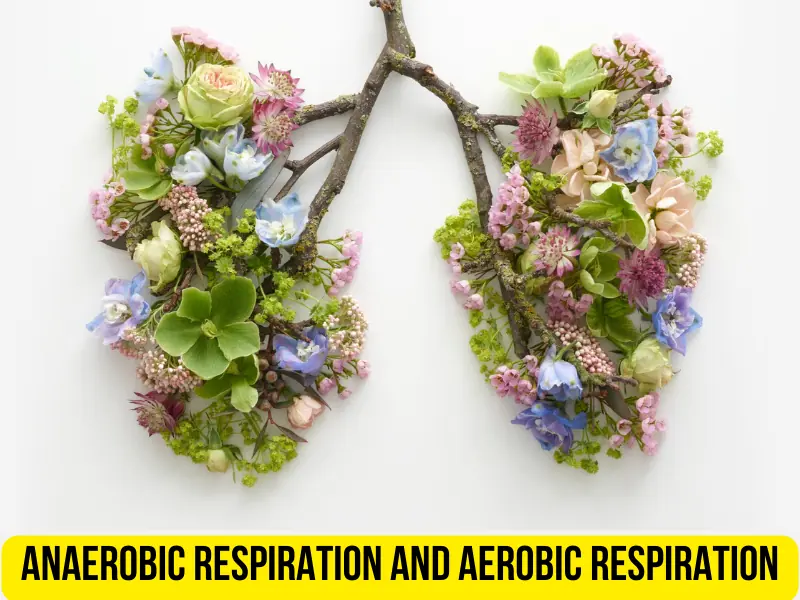When it comes to respiration, there are two main types: aerobic respiration and anaerobic respiration. While they may seem different at first glance, these processes actually share some common ground. In this guide you will learn more about what is the difference between aerobic and anaerobic respiration.
What is Anaerobic Respiration?
Anaerobic respiration is a metabolic process in cells that generates energy without the presence of oxygen. It typically results in a lower energy yield compared to aerobic respiration and often produces byproducts such as lactic acid or ethanol.
This process is employed in situations where oxygen availability is limited, such as during intense exercise or in certain microorganisms, serving as a temporary solution to meet energy demands when oxygen is scarce.
What is Aerobic Respiration?
Aerobic respiration is the primary cellular process for generating energy, which relies on the presence of oxygen to efficiently convert glucose and other organic molecules into a large amount of Adenosine Triphosphate (ATP).
Taking place within the mitochondria of cells, aerobic respiration is the preferred and most efficient pathway for energy production in most organisms.
It produces carbon dioxide and water as byproducts and provides a high yield of ATP, sustaining a continuous supply of energy for various cellular functions, making it the fundamental process for long-term energy production and maintenance of life.
What is the Difference Between Aerobic and Anaerobic Respiration
Aerobic respiration is a metabolic process that occurs in the presence of oxygen. It involves the breakdown of glucose to produce energy, carbon dioxide, and water. This is the most efficient way of generating energy in organisms.
On the other hand, anaerobic respiration occurs in the absence of oxygen. It involves the partial breakdown of glucose to produce energy and either lactic acid or ethanol, depending on the organism. This process is less efficient and often occurs in situations where oxygen is limited.
What do aerobic respiration and anaerobic respiration have in common?
Understanding the similarities between aerobic and anaerobic respiration is crucial because it helps us better comprehend how organisms generate energy under different conditions.
Both processes involve the breakdown of glucose to produce energy, although the end products may differ. Additionally, they allow organisms to survive and thrive in various environments.

By studying these similarities, scientists can gain insights into how cells adapt to different energy demands and oxygen availability. This knowledge is essential in fields such as medicine, agriculture, and environmental science.
In conclusion, while aerobic and anaerobic respiration have their differences, they share the fundamental purpose of generating energy for organisms.
Understanding these processes and their similarities is important in uncovering the intricacies of cellular metabolism and its implications in various fields.
Energy Production
In both aerobic and anaerobic respiration, glucose is broken down to produce energy. However, the process of energy production differs depending on the availability of oxygen.
Comparison of ATP production in aerobic and anaerobic respiration. While both processes generate ATP, aerobic respiration is more efficient in producing ATP compared to anaerobic respiration.
Aerobic respiration produces a significantly higher amount of ATP, providing more energy for cells to carry out their functions. On the other hand, anaerobic respiration produces less ATP and often results in the accumulation of lactic acid or ethanol as byproducts.
Overall, both aerobic and anaerobic respiration serve as essential energy production pathways in living organisms, but aerobic respiration is the more efficient and preferred method when oxygen is available.
Chemical Processes
Aerobic respiration and anaerobic respiration are two different processes that cells use to generate energy. While they have some distinct differences, they also share a few common features.
Both aerobic and anaerobic respiration involve the breakdown of glucose molecules to produce energy. However, the main difference lies in the presence or absence of oxygen.
Aerobic respiration occurs in the presence of oxygen and involves a series of chemical reactions that take place in the mitochondria of cells. It produces a high amount of ATP (Adenosine Triphosphate), which is the energy currency of cells.
Anaerobic respiration, on the other hand, occurs in the absence of oxygen and involves a less efficient process. It typically occurs in the cytoplasm and produces a lower amount of ATP.
Shared intermediate compounds in the metabolic pathways
One common intermediate compound produced in both aerobic and anaerobic respiration is pyruvate. During Glycolysis, the initial step of cellular respiration, glucose is broken down into two molecules of pyruvate.

In aerobic respiration, pyruvate is further processed in the mitochondria to produce more ATP through the Krebs cycle and oxidative phosphorylation. In anaerobic respiration, pyruvate can be converted into different byproducts depending on the specific metabolic pathway, such as lactate or ethanol.
While both aerobic and anaerobic respiration are energy-generating processes in cells, the presence of oxygen and the specific metabolic pathways used result in differences in efficiency and end products.
Presence of Oxygen
Difference in the presence of oxygen between aerobic and anaerobic respiration. Aerobic respiration is a process that requires the presence of oxygen to convert glucose into energy. In contrast, anaerobic respiration does not rely on oxygen and can occur in the absence of oxygen.
Similarities in the Initial Steps of Both Processes
Both aerobic and anaerobic respiration begin with the breakdown of glucose molecules to produce energy. This initial step, known as Glycolysis, occurs in the cytoplasm of cells. During Glycolysis, glucose is converted into smaller molecules called pyruvate and a small amount of energy is released.
While the differences in oxygen availability dictate the subsequent steps in each process, aerobic respiration continues in the presence of oxygen to enter the Krebs cycle and electron transport chain, producing more energy. Anaerobic respiration, on the other hand, may proceed through fermentation to produce energy in the absence of oxygen.
Efficiency of Energy Production
Comparison of the energy yield in aerobic and anaerobic respiration. Aerobic respiration, which occurs in the presence of oxygen, is much more efficient at extracting energy from glucose compared to anaerobic respiration.
This is due to the complete breakdown of glucose molecules and the ability to generate a larger number of ATP molecules in the process.
Anaerobic respiration, on the other hand, is a less efficient process that occurs in the absence of oxygen. It involves the partial breakdown of glucose molecules, resulting in a smaller ATP yield.
Similarities in the overall release of energy
Despite their differences in efficiency, both aerobic and anaerobic respiration involve the release of energy from glucose. They both start with the breakdown of glucose through various metabolic pathways, such as Glycolysis. This process leads to the production of ATP, the main energy currency of cells.
Although aerobic respiration provides a higher energy yield, anaerobic respiration can occur in situations when oxygen is limited, providing a temporary solution for energy production.
In summary, while aerobic and anaerobic respiration differ in their efficiency of energy production, both processes involve the breakdown of glucose and the release of ATP. The choice between the two depends on the availability of oxygen and the energy demands of the organism or cell.
People Also Ask:
- Why You Should Care About Your Immunity Heading Into Winter
- What is in a Medicine Ball from Starbucks?
- How To Do Proper Meditation
- Vitamin-E Health Benefits and Nutritional Sources
- 5 Reasons Why You Should Become CPR Certified
- Keto Lunches For the Girl
- Is Watermelon Good During Pregnancy?
- Keto Diet Grocery List: How to Follow a High-Fat & Low-Carb Diet




